Radio receiver is one such gadget that people have been using for many generations. After the invention of radio communication by Guglielmo Marconi in 1895, the first radio receiver was also invented by Marconi. A radio receiver is an electronic device that can only receive radio signals and can convert the radio signals to audio and sound. A radio receiver can receive radio signals of various frequencies by tuning to a particular frequency. These frequencies are of two types – Amplitude Modulation (AM) and Frequency Modulation (FM).
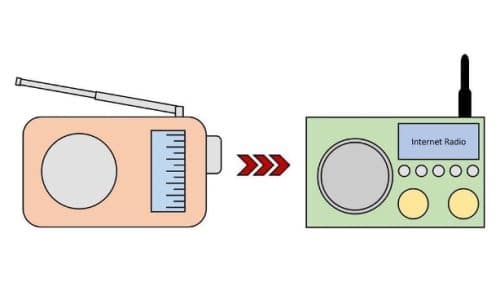
A radio receiver capable of receiving any analog audio on AM/FM frequency is called analog radio receiver and for many years people were using analog radio receivers. But now various types of digital radio receivers are available in the market, which are capable of receiving digital radio signals. FM or digital radio receivers may sound better, but they lack certain qualities that the analog radio receivers have.
Types of radio receivers
There are mainly two categories of radio receivers – analog and digital. Under the analog category, there comes either AM or FM receiver but can also be a combo receiver. Among the digital receivers, it can be either an AM/FM HD radio receiver or a DAB/DAB+ receiver. Internet radio receivers are also digital radio receivers but can only receive radio stations when connected to the internet.
Analog radio receivers
These types of radio receivers can receive analog radio broadcasts of AM/FM frequencies. Earlier there were only AM radio receivers and people used analog AM radio receivers for listening to news and music. The first temporary radio station and broadcast was done by Guglielmo Marconi in 1895, and after that many radio stations started broadcasting news, music, fiction readings, etc on AM frequencies. Since then people have started using AM receivers. After the invention of FM radio by Edwin Armstrong in 1933 — the company called General Electric came up with the idea of FM broadcasting in 1940 and showed that FM radio broadcast is better than AM and is less prone to elecctro-magnetic disturbances.
General Electric started FM radio station (WGFM) during that time but was later sold in 1980 and now it’s called WRVE (99.5 MHz) and also known as 99.5 – The River. FM broadcast can also transmit stereo music and WEFM (in the Chicago area) and WGFM (in Schenectady, New York) were reported as the first stereo FM stations. After the introduction of FM radio broadcast, FM radio receivers started to grow in the market and many receivers came with both AM/FM receiving functionality.
AM radio receivers
AM radio receivers are capable of receiving only AM radio frequencies. AM radio stations broadcast radio signals using a technology called amplitude modulation and in short it’s called AM. It first started with a crystal radio 1904 and then came vacuum tube radios in 1906; after the invention of vacuum tubes by Lee De Forest. Carrying a radio receiver everywhere was not easy at that time because of their bulky design but soon after the invention of the transistor in 1947, radio receivers became portable and smaller in size. An AM radio receiver is capable of receiving AM radio broadcast, which can be of Long Wave (LW), Medium Wave (MW) and Short Wave (SW) frequencies. The Long Wave (LW) frequency range is 30–300 kHz and most of the old AM radio receivers were able to receive longwave radio broadcasts. The longwave signals can travel as far as 2,000 Km but reception at a distance of 17,000 Km was also experienced. Radio Algerie/Chaine 1 (198 Khz) of Algeria, RTL (234 Khz) of France, Médi 1 (171 Khz) of Morocco and Polskie Radio (216 Khz) of Poland are some AM radio stations broadcasting in long wave frequencies with high power antennas. Medium Wave (MW) frequency range is 525 kHz – 1710 kHz and most of the world’s local radio stations have still broadcast on medium wave frequencies since the 1920s. The medium wave stations can be received locally but at night the radio signals can travel as far as 2000 Km and stations can be heard from another city or country. Short Wave (SW) frequency range is 3–30 MHz and many international radio stations broadcast on shortwave frequencies because shortwave signals can be transmitted over a distance of several thousand kilometers, from one continent to another. The shortwave radio signals can travel to various parts of the world because they are reflected by the ionosphere, just like a mirror that reflects light. Among all the types of AM frequencies – only shortwave frequencies can be heard from various parts of the world using any ordinary AM radio receiver.
The first commercial AM radio was RJ6 manufactured by De Forest Radio Telephone And Telegraph Company in 1916. After the invention of Superheterodyne radio receivers by Edwin Armstrong, many companies like Zenith Electronics (USA), introduced AM radio receivers like model 12S-568 and the model 7G605 in 1942 – the first portable radio. Most of the vacuum tube radios were made to receive long wave and medium wave frequencies only because shortwave broadcast was not prevalent at that time. Philips was also one such company who started manufacturing vacuum tube radios in 1927 and became the world’s largest manufacturer of AM radios.
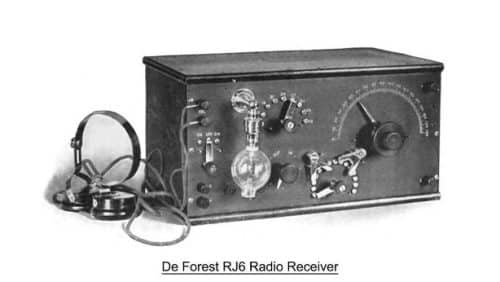
After the invention of the transistor (electronic component) in the early 1950s – many companies like Sony, Zenith, RCA, DeWald, and Crosley started manufacturing various types of AM radio receivers which were capable of receiving shortwave frequencies also. The Sony TR-63 released in 1957 was the first mass-produced transistor radio, leading to the mass-market penetration of transistor radios.
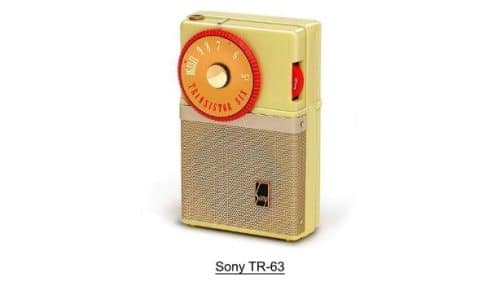
After the golden age of radio during the 1950s and due to the increase of international radio stations – many companies started manufacturing world band receivers. A world band receiver is capable of receiving any AM radio station, broadcasted in longwave, medium wave or shortwave frequencies. Many companies like Sony, Sangean, Grundig, and Philips, manufactured transistor based world band receivers. In India also many companies like Ahuja Radios (New Delhi), Janata Radios Ltd. (Kolkata) and National Ekco (Mumbai), manufactured many AM radio receivers and the Bapu radio receiver from Janata Radios Ltd. (Kolkata) was manufactured with a tribute to Mahatma Gandhi.
FM radio receivers
FM radio receivers are able to receive only FM radio stations. FM radio stations broadcast radio signals through a technology called frequency modulation and in short it’s called FM. This technology was invented by Edwin Armstrong in 1933 and was verified by a company called General Electric in 1940. General Electric also started the world’s first FM radio station called WGFM/WRVE – 99.5 The River 1939 and it was also the world’s first stereo FM broadcasting station in the world. After this many FM radio stations started broadcasting around the world and FM radio receivers started to become popular among the listeners. Many companies started manufacturing FM radio receivers and the company called H. H. Scott (USA) manufactured and sold the first FM radio receiver – Model 350 in 1961.
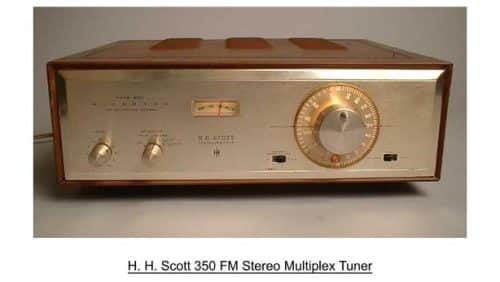
Later companies started manufacturing radio receivers with both AM and FM modes, and today most of the radio receivers can receiver AM and FM frequencies. AM/FM receivers became so popular that many products like alarm clocks, CD/MP3 players, walkmans, portable speakers, etc were manufactured with integrated AM/FM radio. Sony Walkman was one such popular product that came with an AM/FM receiver. However, many radio receivers, manufactured today, also come without AM mode. Due to the decline of AM listeners, many companies now-a-days don’t integrate AM receivers with FM radio receivers. Today, only selected radio models have both AM/FM modes and world band receivers manufactured by companies like Degen and Tecsun have such features. However, due to the rise of smartphone users and the integration of FM receivers in smartphones, the number of AM listeners have reduced overtime.
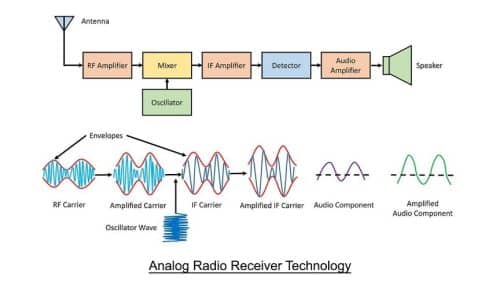
Analog receivers receive the analog radio signals using a telescopic or loop antenna. The received radio signals are then amplified by the Radio Frequency (RF) amplifier and are mixed with oscillator waves. Then the Intermediate Frequency (IF) amplifier sends the amplified signals to the detector, which detects the audio and feeds it to the audio amplifier. The audio amplifier finally amplifies the audio and makes it audible with the help of a speaker.
The radio broadcasting frequencies and the radio receiver manufacturing standards are regulated by the Federal Communications Commission (FCC) of the USA and companies must follow the standards regulated by FCC. Because of this reason almost all radio receivers manufactured by branded companies can only receive frequencies of commercial radio stations but can’t receive any other kind of communication frequencies like Air or Police band frequencies.
Digital radio receivers
Digital radio receivers work only with digital radio transmission or internet broadcast, and a digital radio receiver converts the digital audio signals received from the digital radio signals to analog audio. This analog audio is then converted to sound using an analog audio amplifier. The digital radio signals can be either compressed or uncompressed but are usually compressed in MP2 format. Various types of digital radio receivers include: Digital Audio Broadcasting (DAB), HD Radio and Internet Radio receivers.
Digital Audio Broadcasting (DAB)
A Digital Audio Broadcasting (DAB) receiver can only receive a DAB/DAB+ radio broadcast. A DAB broadcast uses digital radio signals to broadcast audio and can offer more radio stations for the same bandwidth.That’s why it is better than the analog FM, but the audio quality is poor if the bandwidth is less than 192kbps. Moreover, the reception quality of DAB receivers degrades, if the signal strength falls below a critical threshold, whereas FM reception quality degrades slowly with the decreasing signal, providing effective coverage over a larger area. The Norwegian Broadcasting Corporation (NRK) launched the first DAB channel in the world on 1 June 1995 (NRK Klassisk). The BBC and Swedish Radio (SR) also launched their first DAB digital radio broadcasts on 27 September 1995. DAB. Since then many companies have already started manufacturing DAB receivers. Gradually many countries switched to DAB and DAB receivers became popular in the world. Companies like Pure International Ltd (UK), started manufacturing DAB receivers and it was the world’s first company to manufacture DAB receivers for the first time. In 2003, Pure launched the PocketDAB 1000 and It was the world’s first pocket digital radio.
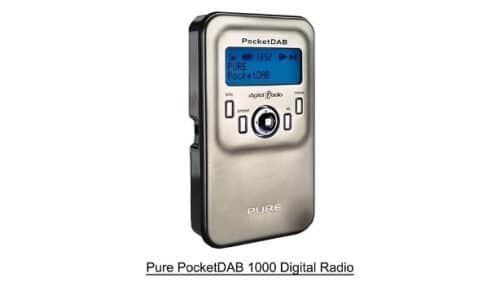
Many other companies like Pioneer, Tecsun, Revo, Tivoli, Geneva, etc manufacture DAB radio receivers. A newer version of DAB broadcast called the DAB+ has started in many countries and many new DAB receivers are manufactured to work with DAB+ but the older ones can’t. However the newer DAB+ receivers are backward compatible and can receive DAB broadcast also. Because of many good features of DAB technology, many AM/FM radio stations have switched to DAB completely, but this isn’t the case for the USA, because in North America most of the radio stations are using HD radio technology instead of DAB for digital radio broadcasting.
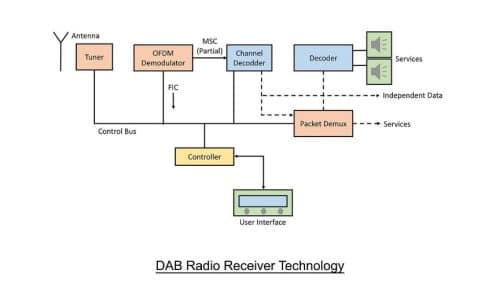
DAB radio receivers use technology for decoding digital radio signals to play the radio station. The tuner digitally tunes the radio frequency and Orthogonal Frequency Division Multiplexing (OFDM) signals are demodulated by the OFDM demodulator. The demodulated signals are used by the channel detector and the digital signals of the tuned station are used by the packet demux and decoder to make use of the digital signals by different services and audio playback. Each of these components of the receiver are controlled by the controller through a control bus, and user inputs are also used by the controller through the user interface.
HD radio receiver
This type of radio receiver can only receive digital AM/FM radio signals which is also known as In-band on-channel (IBOC). HD radio is only a trademark given to the IBOC technology that uses standard radio frequency to transmit audio and data. The digital data is transmitted just above and below the analog audio of the radio signal, so that the audio can be listened in either digital HD mode or as normal analog audio. HD radio broadcast is mostly available in the United States, Canada and Mexico. It was selected by the U.S.
Federal Communications Commission (FCC) in 2002 as a digital audio broadcasting method for the United States, and is the only digital system approved by the FCC for digital AM/FM broadcasts in the United States. Since then many HD radio receivers are available in the market. Sangean, Sony, TEAC, Yamaha, JVC, Kenwood and Pioneer are some popular companies that manufacture HD radio receivers. Sangean HDR-16 and Sparc SHD-BT1 are some HD radio receivers available in the market and on online stores like Amazon.
Internet radio receivers
Internet radio receivers work by encoding the streaming audio broadcast over the internet and converting it to audio signal. An Internet radio receiver can be either a standalone hardware device (embedded system) or it can be an application software running on any operating system. Internet radio was pioneered by Carl Malamud. In 1993, Malamud launched “Internet Talk Radio”, which was the “first computer-radio talk show, each week interviewing a computer expert”. Since then many internet radio stations started broadcasting online, and international stations like BBC World Service also started broadcasting online. Many standalone internet radios are available in the market and Kerbango internet radio receiver from 3com was the first standalone internet radio receiver that let people listen to internet radio stations without any PC.

It’s also possible to listen to any online radio station using any internet radio station using any mobile app or PC software. PC software like Scream Radio from Steamcore (https://www.screamer-radio.com/) is an internet radio software that can be used on Windows PC for listening to online radio stations. In order to listen to any online radio station using the internet radio receiver, one must get the streaming URL link. Many websites like https://www.internet-radio.com/ hosts online radio stations but to get the streaming link, you have to download the M3U playlist file and open it using a text editor like notepad. After opening the playlist file in notepad you will see the streaming URL as a web address with a port number (example: http://us4.internet-radio.com:8266/). You need to copy that URL link and use it with your internet radio receiver to play that radio station.
This seems a very easy way of listening to online radio stations but there are many radio stations that don’t use a static URL link for streaming their radio stations and it’s always encrypted. Such radio stations can only be played on their official website or using their mobile app. Many international radio stations like Voice of America and China Radio International use encrypted radio streams.

Internet radio receivers can also work using a microcontroller like ESP32 and a Digital to Analog Converter (DAC). The microcontroller needs to be programmed to decode internet radio packets. When connected to the internet using WiFi, the user can tune to an internet station using the controller interface and the station information is displayed on the
display device connected to the microcontroller. The decoded signals are fed to DAC and converted to analog audio, which is played using a connected speaker.
Software Defined Radio (SDR)
A SDR radio receiver works with the help of a software to complete various radio processing tasks like tuning and filtering of radio signals. Unlike a traditional radio receiver, in which various electronic components like filters, fixers, amplifiers, modulators/demodulators, detectors, etc., are implemented in the hardware, in a SDR receiver, such components are also implemented in the software and can be controlled with the help of a computer/embedded systems.
The first SDR was developed by the research team of an American entrepreneur and scientist called Ulrich L. Rohde, While working under a US Department of Defense contract at RCA in 1982, and it used the COSMAC (Complementary Symmetry Monolithic Array Computer) chip. However, the practical commercial application of SDR was made possible by a company called Broadcom, with the help of RF CMOS technology. The company demonstrated this by integrating a SDR on a single mixed-signal System-on-a-Chip (SOC) with the BCM21551 processor in 2007.

Since then many companies have introduced SDR receivers in the market for ameture use. Any USB dongle with the Realtek RTL2832U/R820T2 demodulator chip can be used as a SDR receiver with the help of a computer and SDR software like SDRSharp. It has a frequency range of 25MHz up to 1800MHz and supports both analog (AM/FM) and digital (DAB) radio reception. More information is available at https://www.rtl-sdr.com/.
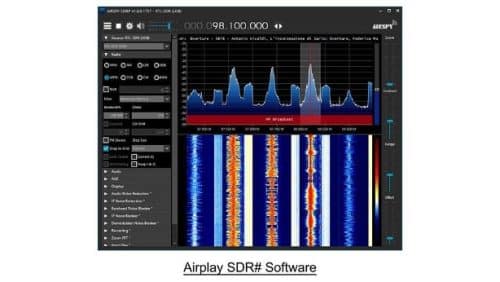
The SDR receiver hardware works along with the hardware of the connected computer. Various components of the receiver are controlled by the computer hardware according to the software configuration. The radio signals received by the antenna connected with the SDR hardware is used by the flexible RF hardware of the SDR. Only the flexibility of the RF hardware makes it possible to work in many different modes with the help of a software. The filtered radio signals are converted to digital data and are used for channelization and sample rate conversion. This data is then used by the computer for further processing to output the data for audio.
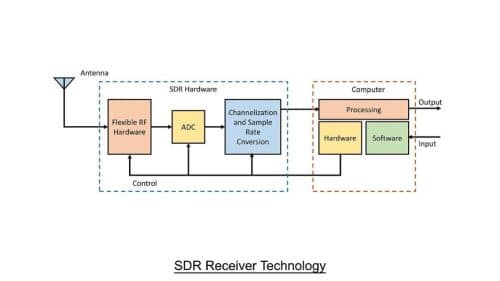
Many AM/FM radio stations have resorted to digital transmission, and are also running internet radio channels. Even though the audio quality of digital radio transmission is of superior quality, digital transmission is still having some disadvantages when compared with the traditional analog transmission. And one of the biggest disadvantages is that digital transmissions like DAB have limited coverage range. AM analog radio signals (especially SW) can be transmitted to thousands of miles from one country to another, but that’s not possible with digital radio transmissions like DAB. Moreover, to use an internet radio receiver, one must have an active high speed internet connection, which is not free.
Therefore, analog radio technology has some good features that makes it a winner in some worst case scenarios, and it’s one of the best technologies ever made.







The article, “The Transformation of Radio Receivers” by the author Ms.Debojit Acharjee, is indeed very deeply covered with care for beginners. He has given almost all available information on the subject very clearly and broadly. Thanks a lot for this.
I am a very longtime hobbyist from my school days. It was the early days of the Transistor and the gradual disappearance of Thermionic Valves. As indicated in this article, the “Pocket Radios” of these years were in fact “Big Pocket Radios!”
Cricket is the sole booster for the growth of these Radios. Cricket commentary virtually pushed every cricket fan to acquire one that were somewhat costly in those days. My brother and I were ardent fans of cricket and so needed a Radio. We have to visit a Doctors home often to listen to the commentary and relay it to our father!
I acquired one old pocket from my science master and it needed some cleaning and rewiring. The neat PCB, the rarest of all Electronic Components in those Tag Board Wiring days, gobbled me up the very moment. Fascinated so much that I decided to become an Electronic Hobbyist then and there! In order to learn first hand, being a DIY and Practical Learner, I dismantled it bit by bit, sketching the parts carefully as a file, I studied the components one by one. With scant source of technical literature, I relied soled on How To Do It Encyclopedia alone!
Later after the study, following my sketches, I reassembled the Radio and it worked even better. Since those Radios required very long Aerials, (mine needed some fifty feet of it!).
So, I acquired both a live Radio and live commentary!
From that day on, I grew along with the Transistor and Electronics, till this date.
Congratulations to the author and hearty thanks for making me go thru some reminiscence of my budding days in Electronics and Electronic Hobby.
Thank you for your valuable feedback.
“The Transformation of Radio Receivers” – By Debojit Acharjee
Thank you sir for a very informative article on my most favorite Department of Technology, the Electronics and Communication!!
As you said, it is true that – “”one of the biggest disadvantages is that digital transmissions like DAB have limited coverage range. AM analog radio signals (especially SW) can be transmitted to thousands of miles from one country to another, but that’s not possible with digital radio transmissions like DAB. Moreover, to use an internet radio receiver, one must have an active high speed internet connection, which is not free””.
And “That” deep throated full Bass is missing altogether in the present day’s Ear Piercing Treble full Digital Radio! The soft thumping Bass thru a 8 inch speaker of those Valve Radios were the coolest music to savor! We had a cabinet size GEC Roller Tuner Radio in those days!
Thanks once again!
Therefore, analog radio technology has some good features that makes it a winner in some worst case scenarios, and it’s one of the best technologies ever made.